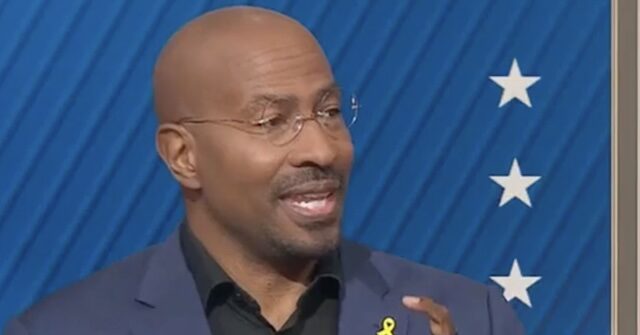On a recent episode of CNN’s “Countdown to Election Day,” commentator and former Obama adviser Van Jones expressed significant concerns regarding Vice President Kamala Harris’ electoral prospects in Pennsylvania. Host Kate Bolduan questioned him about the Vice President’s ongoing campaign efforts in the state, particularly her five-city tour culminating in a rally in Philadelphia. Despite acknowledging the campaign’s intensity, Jones conveyed a pervasive sense of anxiety, asserting that he remains “nervous all the time” about the Democratic chances in the Keystone State. His apprehension stems from broader trends observed in voter engagement and support dynamics that could critically impact the Democratic ticket’s performance in the state.
Jones pinpointed Philadelphia as a crucial battleground, highlighting a noticeable decline in voter turnout compared to previous elections. He noted that while Democrats historically rely on a robust margin from urban centers like Philadelphia to secure victories, the current climate presents a greater challenge in mobilizing voters. He referenced efforts by local activists, such as Pastor Carl Day, who are working tirelessly to encourage young men in the community to engage with voters directly. However, Jones suggested that the inherent difficulties in galvanizing support in the city have heightened his concerns as election day approaches, emphasizing that capturing the urban vote will demand an unprecedented level of grassroots effort.
Another key issue that Jones raised is the changing dynamics of the Jewish vote in suburban areas, which historically leaned heavily Democratic. He pointed out that Biden’s previous strong performance with Jewish voters—who backed him by a margin of 70%—has seen a troubling shift in support now reflected in recent polling. Specifically, some surveys indicate that Kamala Harris is currently polling at a much less favorable 50-50 split among this demographic. This represents a worrying drainage of critical votes that could spell the difference between victory and defeat for the campaign, particularly given that he estimated about 70,000 votes could be at stake if current trends continue.
Jones’ comments illuminate a broader unease within the Democratic Party about mobilizing the electorate, especially in battleground states where every single vote counts. He described the upcoming days as requiring “door to door, bruised knuckles, tired legs, lots of coffee” to rally support, underlining the strenuous nature of grassroots campaigning. This grassroots effort will be vital in rekindling enthusiasm among voters who may feel disillusioned or apathetic about the election. Jones’ admissions of nervousness reflect a sense of urgency that permeates Democratic strategists as they prepare for a highly competitive election cycle.
In articulating his worries, Jones encapsulates a broader sentiment among party insiders who recognize the shifting political landscape and the critical importance of constituency loyalty. The Democratic Party’s reliance on urban voter turnout is juxtaposed against a backdrop of potentially waning support among key demographic groups, a situation that could leave the party vulnerable in critical swing states like Pennsylvania. His assessment serves as a cautionary tale about the need to address these vulnerabilities through targeted outreach and engagement strategies in the weeks leading up to the election.
Ultimately, as the electoral season heats up, Jones’ candid acknowledgment of anxiety around Kamala Harris’ prospects in Pennsylvania reveals the importance of voter mobilization efforts in the Democratic strategy. His reflections underscore the necessity of addressing voter turnout and satisfaction across various demographic segments, particularly those that have shown signs of disengagement. As the campaign continues, the Democratic Party must adapt to these shifts to ensure they can rally the support needed for a successful outcome on election day.

